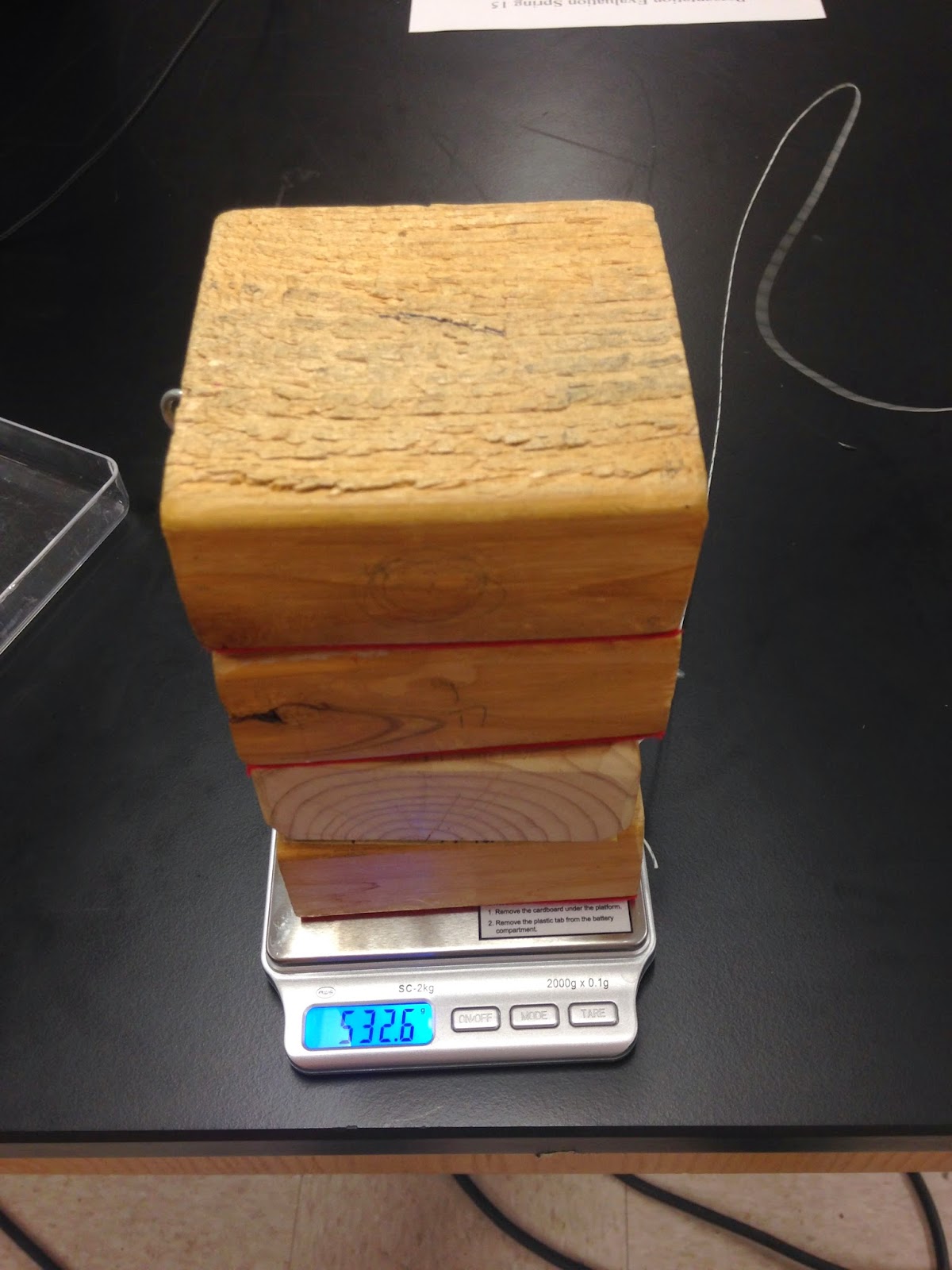Part 1: Static friction
Static friction is the force acting between two bodies when they are not moving relative to one another. In this experiment, we added water to a cup a little bit at a time until the block just started to slip.
u static = f static maximum / N
since
f static maximum = u static * N
 |
| Mass of One Block |
 |
| Mass of Water for One Block |
We then repeated this process but after adding a new block onto the block for a total of four trials.
 |
| Mass of Two Blocks |
 |
| Mass of Water for Two Blocks |
 |
| Mass of Three Blocks |
 |
| Mass of Water for Three Blocks |
 |
| Mass of Four Blocks |
 |
| Mass of Water for Four Blocks |
Using this data we created a data table that first had the mass of the blocks and then mass of the cups of water. We then made a column that represented normal force (mass of block*gravity) and one that represented the static friction force maximum (mass of water*gravity).
(picture of data but my lab partner is laggin it....)
We then graphed the data so that we could find the slope. Therefore, the experiment was successful since the slope showed us the coefficient of static friction for the red velvet on the table surface.
(picture of graph.....lab partner again...awk)
Part 2: Kinetic Friction
f kinetic = u kinetic*N
Using the logger pro we connected the block to the Force Sensor. We got a second block on top of the first and repeated the experiment until there were three more blocks on top like the previous experiment. The graph below showed the force which equalled the force of kinetic friction since velocity was constant.
(graph)
The data received from the mean of each line was used for the force of kinetic friction which was then divided by normal to get the kinetic coefficient of friction.
(data)
The coefficient of friction was then averaged to be equal to (coefficient).
Part 3: Static Friction From A Sloped Surface
We placed a block on a horizontal surface. After slowly raising one end of the surface, we tilted it until the block started to slip. We then took the angle measurement.
We then used the angle to calculate the coefficient of static friction.
f kinetic = u kinetic*N
Using the logger pro we connected the block to the Force Sensor. We got a second block on top of the first and repeated the experiment until there were three more blocks on top like the previous experiment. The graph below showed the force which equalled the force of kinetic friction since velocity was constant.
(graph)
The data received from the mean of each line was used for the force of kinetic friction which was then divided by normal to get the kinetic coefficient of friction.
(data)
The coefficient of friction was then averaged to be equal to (coefficient).
Part 3: Static Friction From A Sloped Surface
We placed a block on a horizontal surface. After slowly raising one end of the surface, we tilted it until the block started to slip. We then took the angle measurement.
 |
We then used the angle to calculate the coefficient of static friction.
Part 4: Kinetic Friction From Sliding A Block Down And Incline
With a motion detector at the top of an incline steep enough that a block accelerates down the incline, we measured the angle of the incline and the acceleration of the block and determined the coefficient of the kinetic friction between the block and the surface from our measurements.
 |
| Free Body Diagram |
 |
| Lab with Motion Detector |
 |
| Coefficient of Kinetic Friction |
Part 5: Predicting The Acceleration of a Two-Mass System
Using this coefficient of kinetic friction we derived an expression for what the acceleration of the block would be if a mass was hanging from the other end of a pulley.
Then the actual acceleration was recorded on the graph below.
(picture of graph, if my partner would help...)
Therefore, the percent error was %, a close match.




































